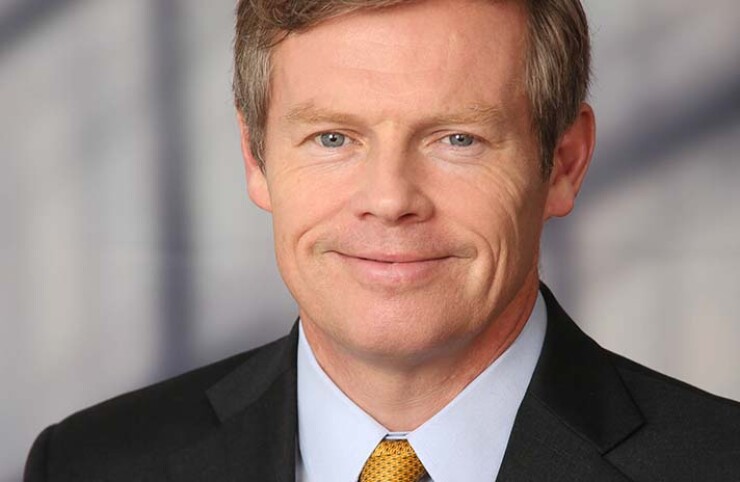When experts predicted what they
But the economy surprised to the upside, with no signs of recession, and the Fed is now expected to cut rates in 2024. Here are what some experts foresee for the economy and the Fed in 2024.
Ryan Swift, U.S. bond strategist at BCA Research, sees a deceleration in labor demand, which will lift the unemployment rate, and put the U.S. in recession in the last half of 2024.
“In this context, the Fed will ultimately deliver more than the 160 bps of rate cuts that are priced for 2024, though the dovish surprise to expectations will occur in the second half of the year after the recession has begun,” he wrote in an outlook.
The first Fed rate cut will come as early as March, he noted, but more likely in May or June. “Rate cuts will be tentative initially, we anticipate no more than 50 bps of easing by the end of the June FOMC meeting, but will accelerate in H2 2024 once the unemployment rate starts to rise meaningfully.”
Quantitative tightening will end in 2024, Swift predicted, in November if there is no recession, and earlier if there is a recession.
The
The Fed’s actions could have “increased the longer-term odds of structurally elevated inflation, which would be a toxic outcome for both stocks and bonds,” he said.
“It is too early for the Fed to declare victory in its battle against inflation,” said Morgan Stanley in a note written by Economist Diego Anzoategui and others. “A dive into the weeds reveals sources of stickiness in services remain.”
Disinflation has continued, he noted, and Morgan Stanley sees the Fed “offset[ing] declining inflation with a total of 100bp in cuts to the nominal federal funds rate by end-2024, leaving policy less restrictive than it is today.” They see the first cut in June.
They see core personal consumption expenditures up 2.4% at the end of 2024 and the core consumer price index 2,9% higher a year from now.
“We don’t expect a continued drag from financial services and medical services inflation will likely remain above pre-COVID levels,” he wrote. “Moreover, housing disinflation is proving to be sticky and our insurance equity analysts expect high car insurance inflation ahead. The acceleration will lead to a renewed upward trend in 6-month average inflation rates, which will gradually approach annual rates during 1H24.”
But inflation will not fall as much as the market expects without a recession, according to Jim Besaw, founding principal at GenTrust, who said the chances of a downturn “are significantly higher” than market expectations. Therefore, he said, “rate cuts without a recession less likely than the market believes.”
“We believe the market is putting a lot of weight on the narrow scenario of: inflation coming down, avoiding a recession, AI growing into the hype, the delayed effects of higher rates not materializing, and geopolitical tensions staying contained,” Besaw said.
And 2024 plays into the forecast of David Kelly, chief global strategist at JPMorgan Asset Management. “2024 — 2% growth, 0 recessions, 2% inflation and unemployment staying at roughly 4%,” he said. “However, there are clearly risks that could divert us from that path.”
Gross domestic product growth will slow as consumer spending slips because of fewer job gains and tighter lending standards, Kelly said. “That being said, while younger and poorer households are showing signs of increased financial stress, on aggregate, consumer financial conditions are not nearly as dire as they were before the Great Financial Crisis, and we expect consumer spending to grow more slowly rather than shrink.”
But, Kelly said, capital spending is more at risk than consumer spending, as a result of higher interest costs and slower revenue growth. “Moreover, the longer high interest rates remain in place, the greater is the risk of a surge in small business bankruptcies.”
Artificial intelligence and incentives for semi-conductor manufacturing will offset declines in construction, he said.
Still, “it should be recognized that there are many potential risks to this outlook,” Kelly said, “including a U.S. election, the lagged consequences of higher interest rates and very significant geopolitical tension. Any of these issues, or something else entirely, has the potential to trigger recession in a slow-growing U.S. economy, making 2024 a year for hope but not complacency.”
While the Fed will cut rates “rather substantially” in 2024, Wells Fargo Securities Senior Economist Tim Quinlan and economists Shannon Seery Grein and Nicole Cervi noted, “the timing and magnitude remain uncertain and dependent on the trajectory of inflation.”
GDP will contract near midyear with “sluggish” growth throughout the year, according to their base case, “but our conviction around recession is not as strong as it once was, and if the economy does slip into recession, we anticipate it will be a rather mild one.”
The market may wind up disappointed, as Scott Wren, senior global market strategist at Wells Fargo Investment Institute, said, “we expect only half the number of Fed rate cuts the federal funds futures are suggesting.”
Many investors are overweight on the information technology, consumer discretionary, and communication services sectors, he said, and Wells Fargo “trim positions on” these sectors and invest in the health care, industrials, and materials sectors, which “have not kept pace with the S&P 500 Index in this narrow equity rally but in our view offer attractive relative performance potential between now and the end of next year.”
